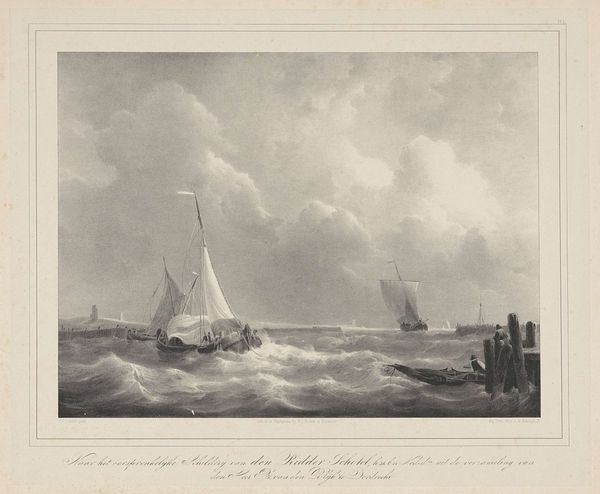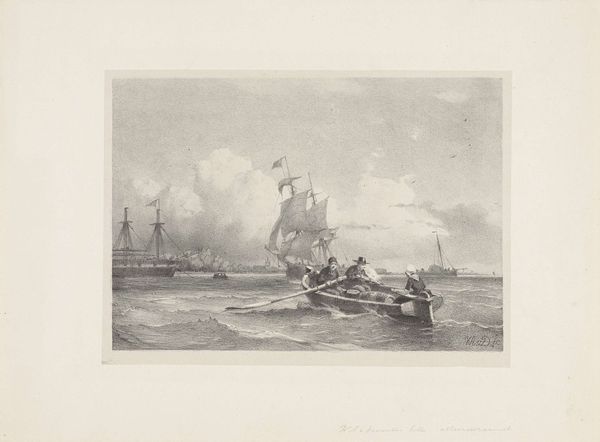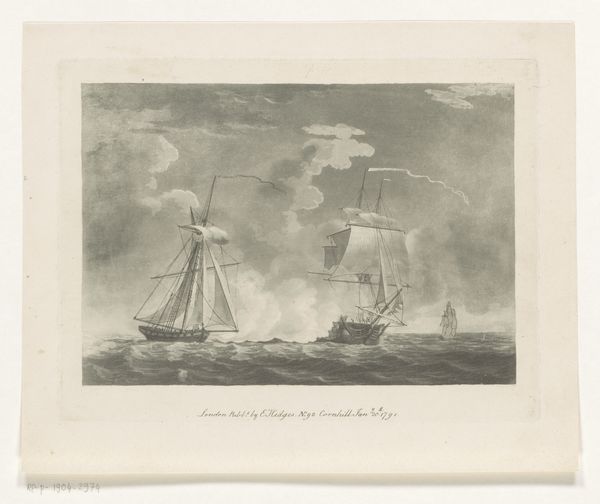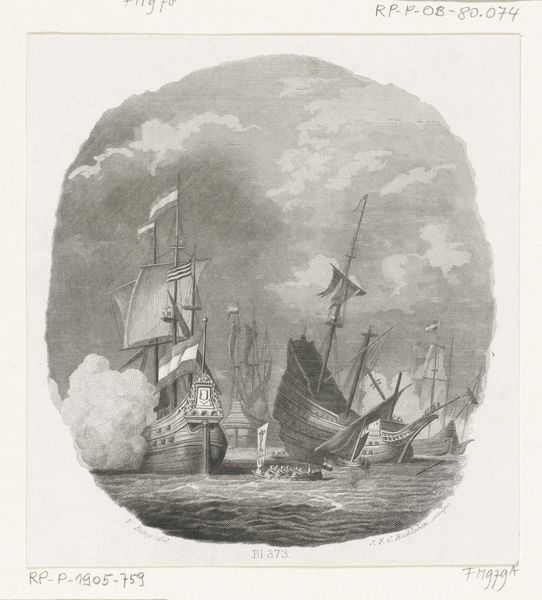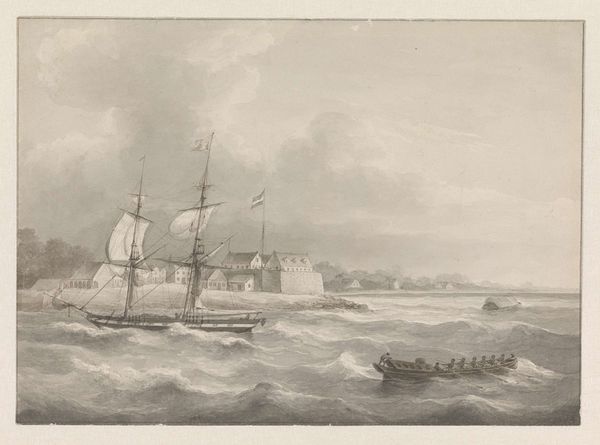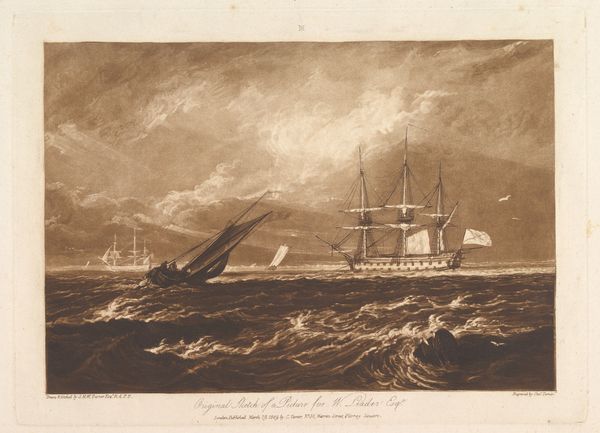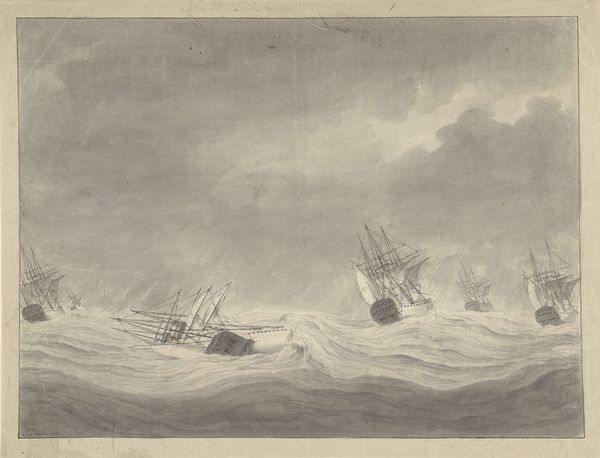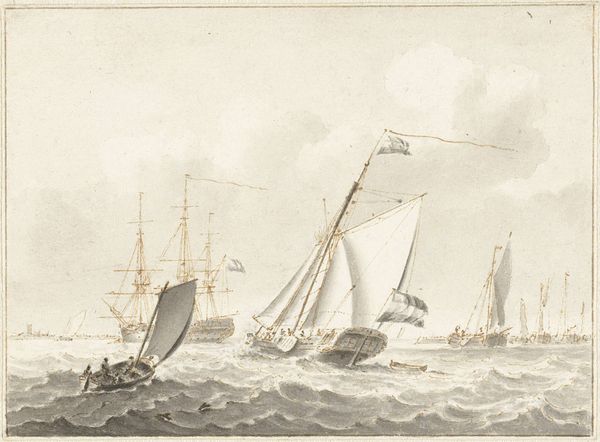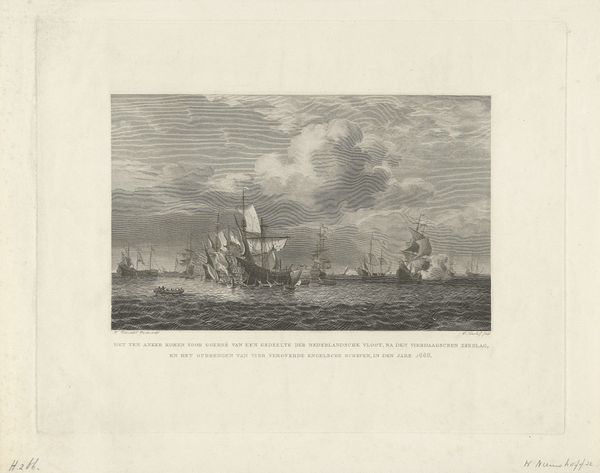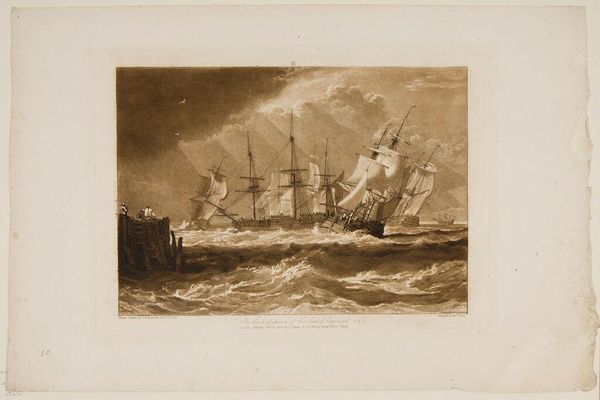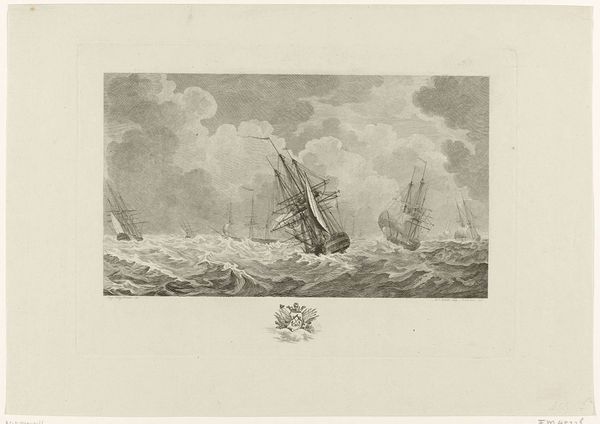
print, engraving
#
pencil drawn
#
narrative-art
# print
#
pencil sketch
#
old engraving style
#
landscape
#
romanticism
#
19th century
#
line
#
engraving
Dimensions: height 435 mm, width 550 mm
Copyright: Rijks Museum: Open Domain
Curator: Leonard de Koningh created this engraving, "Boats in Stormy Weather," sometime between 1822 and 1845. It’s currently held in the Rijksmuseum collection. Editor: My initial reaction is pure drama! The contrast between the tumultuous waves and the fragile boats creates a feeling of intense vulnerability. Curator: The piece evokes the Romanticism movement so prevalent in the 19th century, capturing the sublime power of nature and humanity’s struggle against it. I find myself pondering questions about societal hierarchies within the maritime world during this era and how class might intersect with the experience of a storm. Editor: Absolutely, there's a theatricality to it, almost operatic, in how the scene unfolds. Note how the waves are almost clawing at the vessels, attempting to pull them down. And then look at the boats themselves – their shapes and sails create a rhythm, like a visual echo across the scene. They carry the symbolism of human endeavor, courage, and the constant negotiation with unpredictable forces. Curator: I'm thinking about how notions of masculinity may be reflected. These are mostly likely men on the boats doing strenuous labor against the elements, potentially feeding families back on land, if they return. The romanticization of sea life often discounts the daily toil and loss of life endured. Editor: I agree that focusing on Romanticism alone discounts critical analysis of labor, though, I think one cannot ignore the emotional weight De Koningh instills in the print by drawing from that symbolic and iconographic tradition. Those billowing sails could represent ambition, escape, or even fragility when faced with an unpredictable storm. It highlights the vulnerability of humans and the power of nature, both ever-present. Curator: Acknowledging the symbolic intent certainly encourages deeper understanding of what narrative and cultural meanings might exist around seafaring in 19th century Netherlands. Editor: Looking at it again, I am struck how those recurring visual elements help to convey continuity and perseverance of these trades. The scene depicts struggle but also determination. Curator: Reflecting on the interplay between nature, work, and representation in the artwork, my sense of historical empathy grows. Editor: Yes, a dialogue with art history always provides space to understand where and how human narratives and symbols live through changing times.
Comments
No comments
Be the first to comment and join the conversation on the ultimate creative platform.
